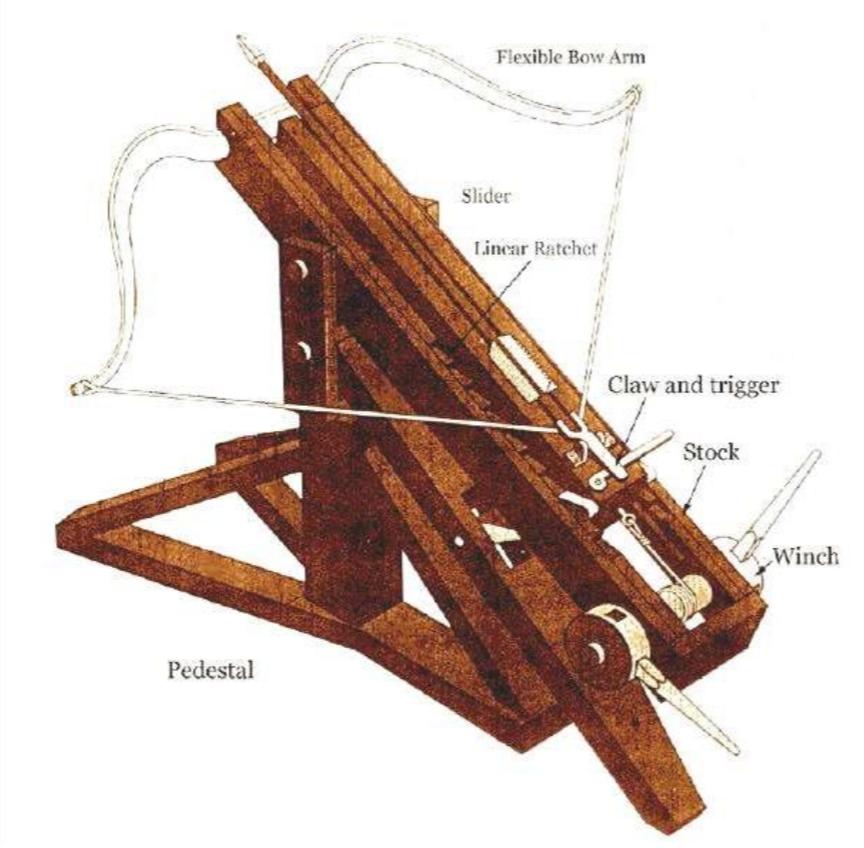
With the specificity of ancient Greek tactical warfare as a quest to conquer cities of breadth, depth, and optimized defense, the rulers of Greek colonies during the fourth century B.C. era became increasingly interested in improving their range and decimating force of weaponry in their lustrous goals to secure any and all sieges or battles. Thus, the commencement for designing a weapon to redefine infringing warfare began in 399 B.C. when Dionysius the Elder, the Greek ruler of the colony of Syracuse in Sicily, issued a declaration to produce new novel weapons, one of which was the infamous catapult.
Although categorized as the first catapult recorded through conventional documentation, these ancient catapults more closely resembled the common draw-bows of soldiers during this era and utilized what has now been coined, “The Flexible Bow Mechanism,” an apparatus which generates power through tension created by movable sliders. Thus, these mechanical bows were responsible for launching arrows through the compositionally conglomerative use of composite wooden ores, tension fibers of animal sinew, and wooden compression horns. Contrary to the depiction of stereotyped catapults, one should note that this initial design remained attached to the human subject as, descriptively, this preliminary design was to be worn across the shoulders of soldiers on the battlefield and strategically placed along a surface once one’s destination was secured. However, records also suggest that the soldiers of Syracuse were also known to have constructed mobile siege towers that were to overlook enemy city walls and utilize flexible-bow catapult to provide heavy aerial fire. The design also received notable adjustments in its inception. This included the preferred use of animal sinew to human or horsehair for optimized elastic tension, the addition of linear ratchets alongside the weapon’s main stock which increased the resistive force of the bow, and the use of a circular rachet to allow winches to be used in the drawing of the highly compressed bow.
Furthermore, the weapon’s highly optimized precision was said to have made the catapult an attractive device for the ruling Greek commissioners. Thus, due to the increased precision of the bow, the size of the design quickly increased to favor more impactful assaults. While no longer permitting the mobility of the device by mere human strength, the catapult required a lower pedestal for stability purposes. To facilitate this change in design, the ancient engineers of Syracuse were recorded as the creators of the first iteration of the universal joint, a mechanism which is commonly thought to originate in the 16th and 17th century by either Girolamo Cardano or Robert Hooke. While there is not any official recording for the approximate range of these early catapults, these weapons were said to have been able to utilize arrows nearly two meters long and decimate enemy forces with deadly accuracy.
Sources:
History of Catapults - Physics of Catapults. (n.d.). Retrieved May 6, 2019, from https://sites.google.com/site/physicsofcatapults/home/history-of-catapu…
Yurtoğlu, N. (2018). Http://www.historystudies.net/dergi//birinci-dunya-savasinda-bir-asayis-sorunu…. History Studies International Journal of History, 10(7), 241-264. doi:10.9737/hist.2018.658
